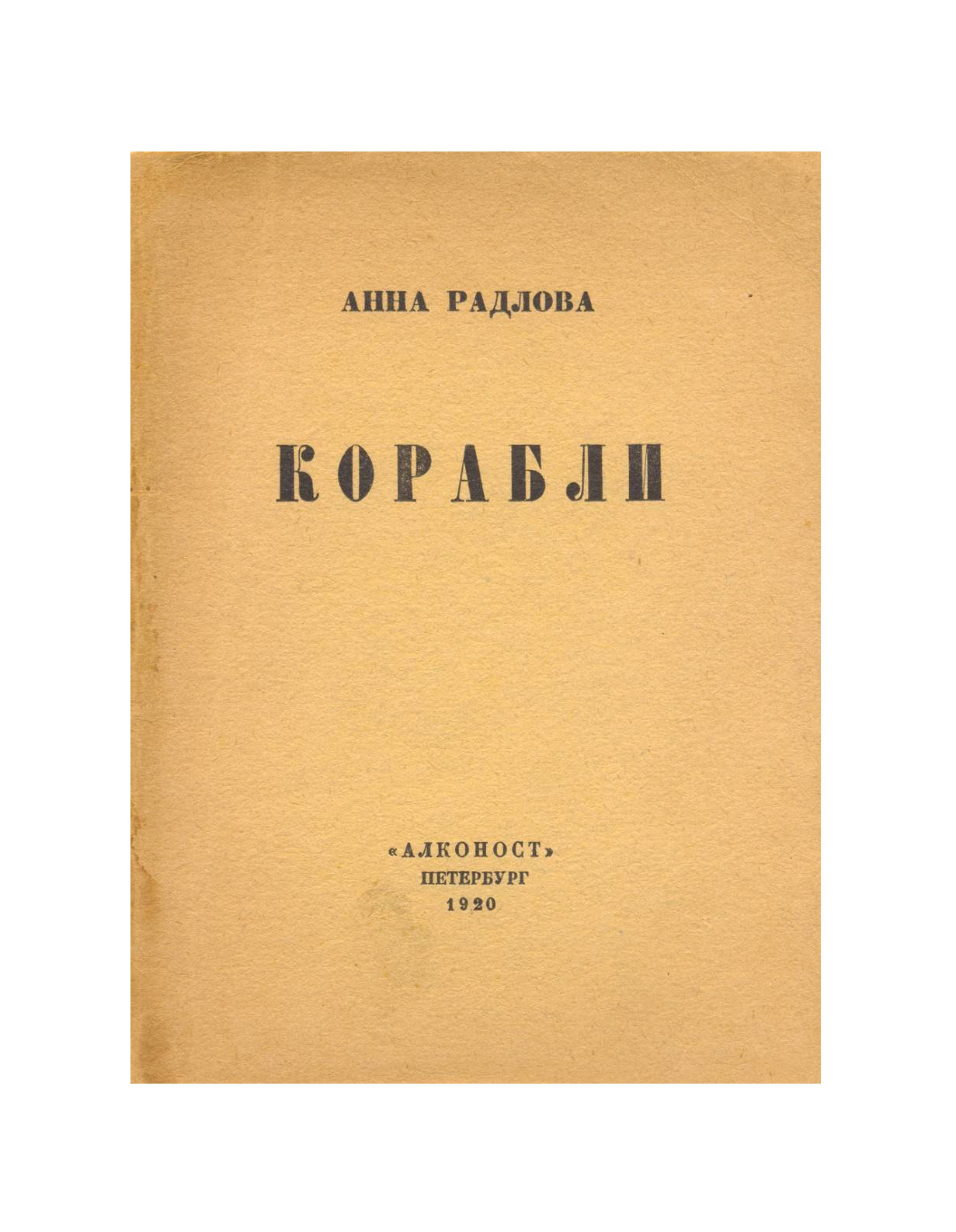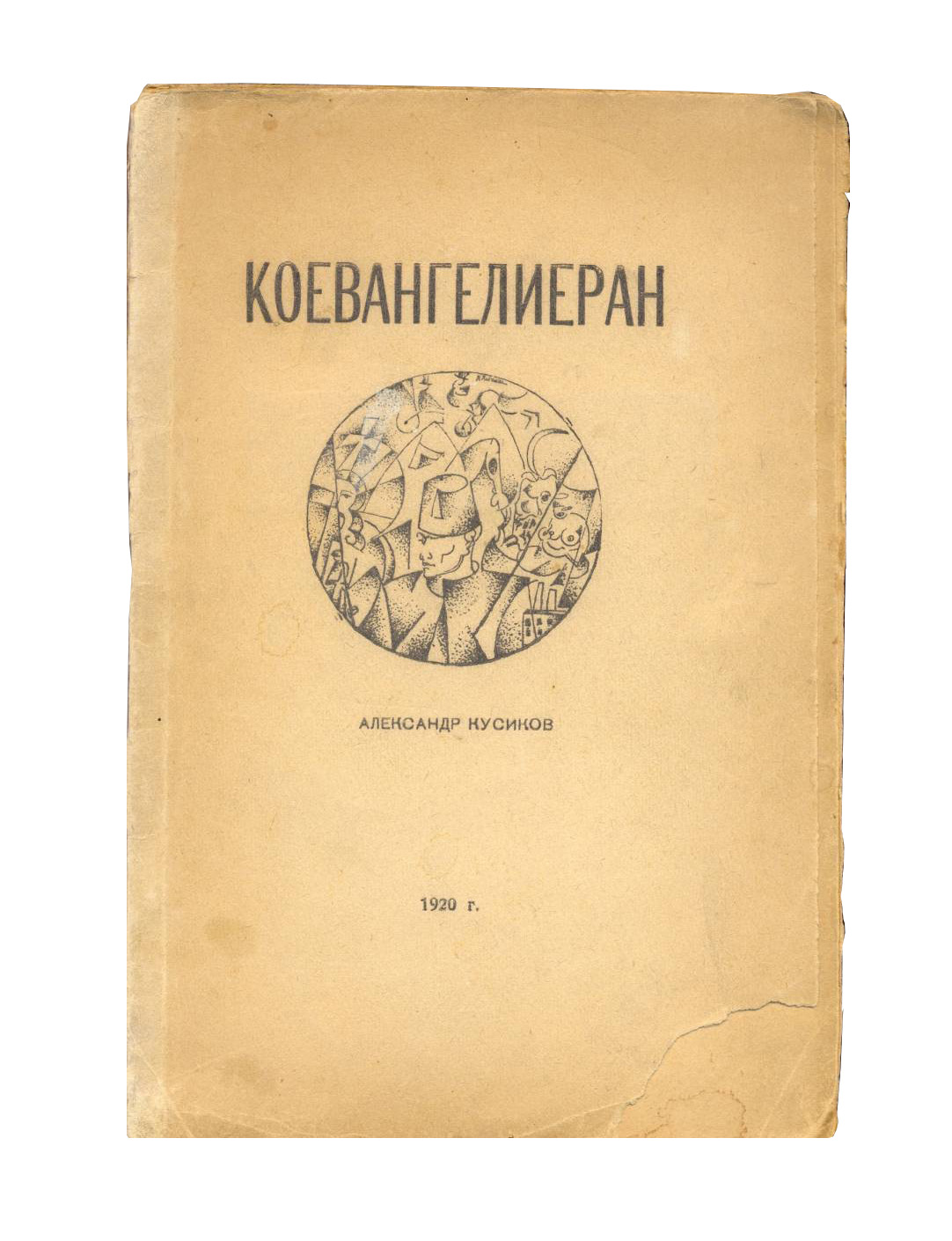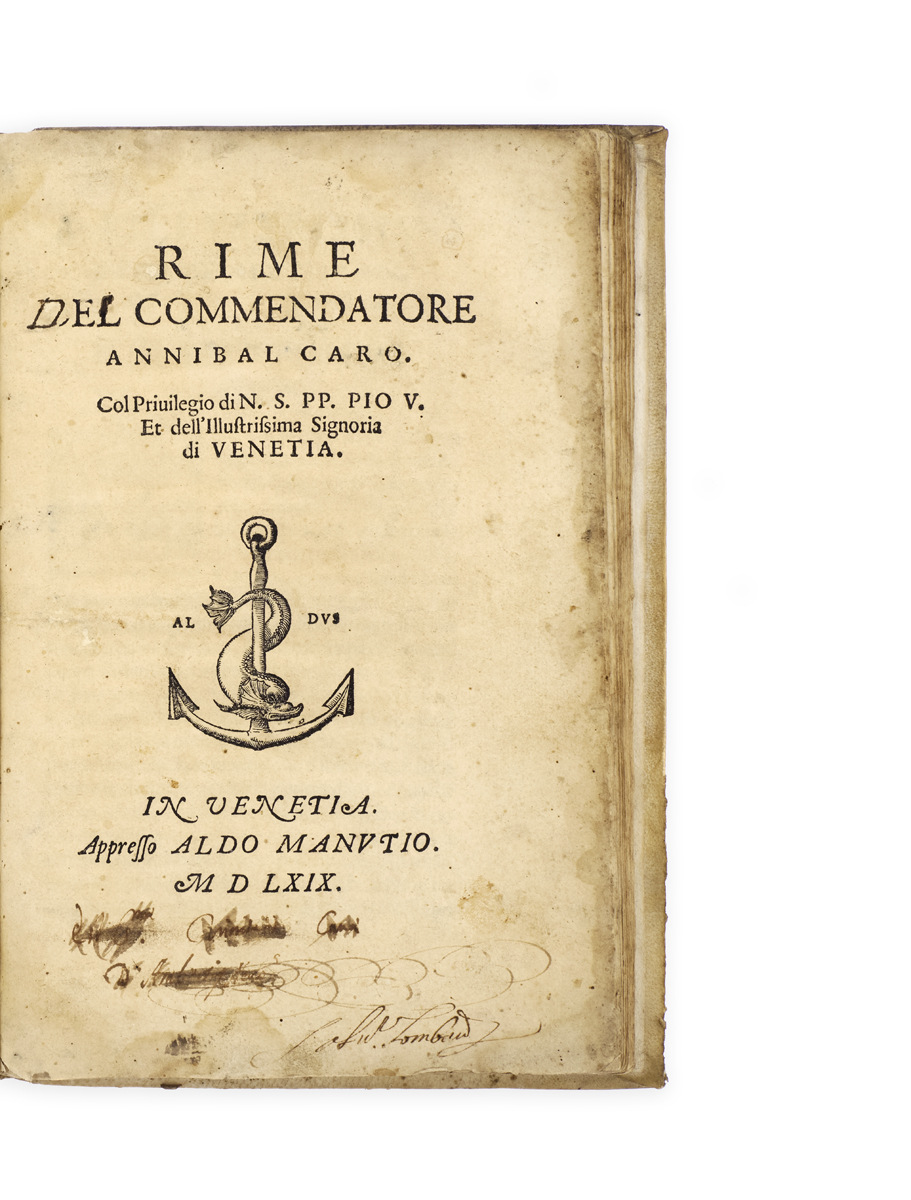
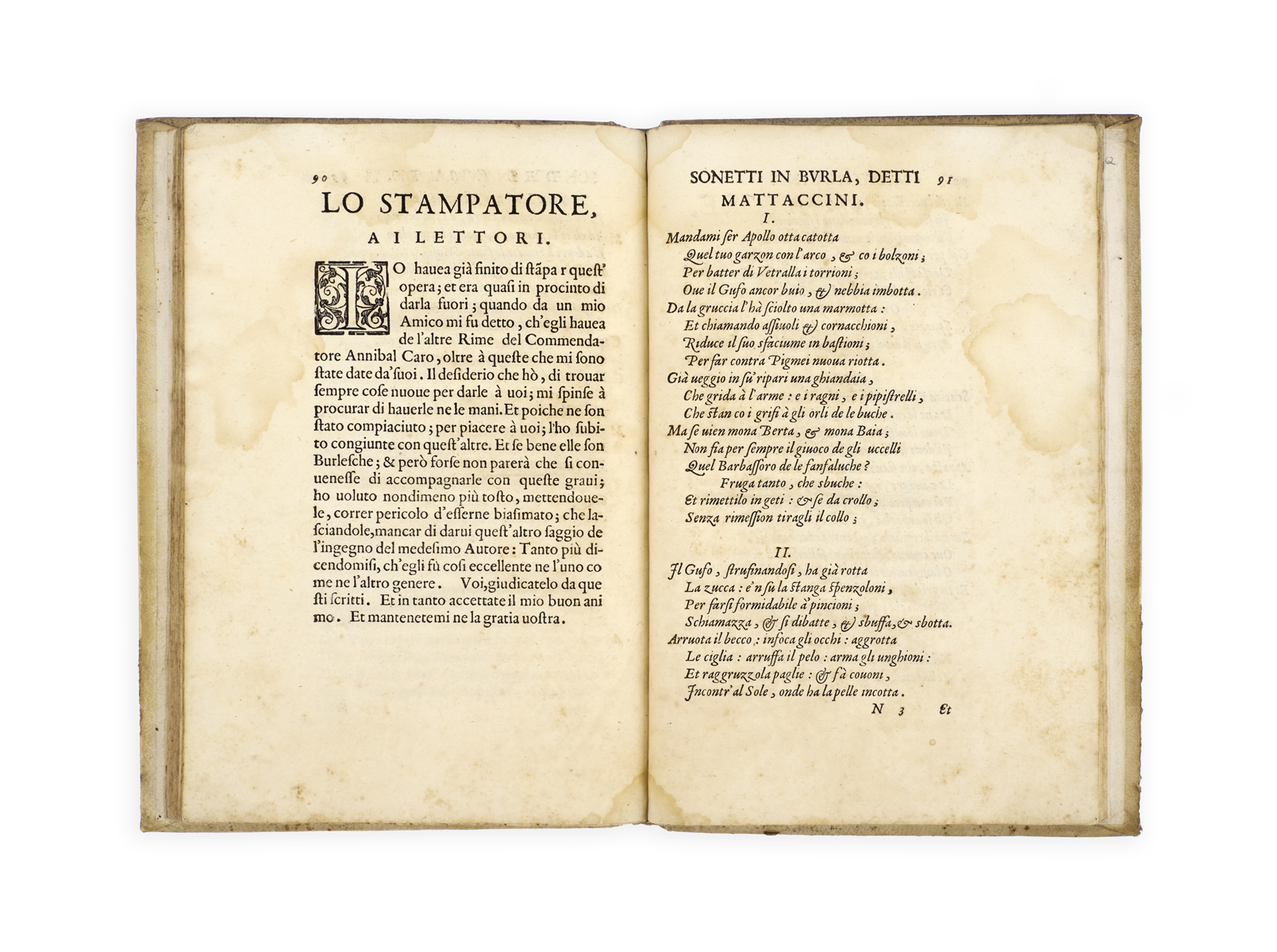
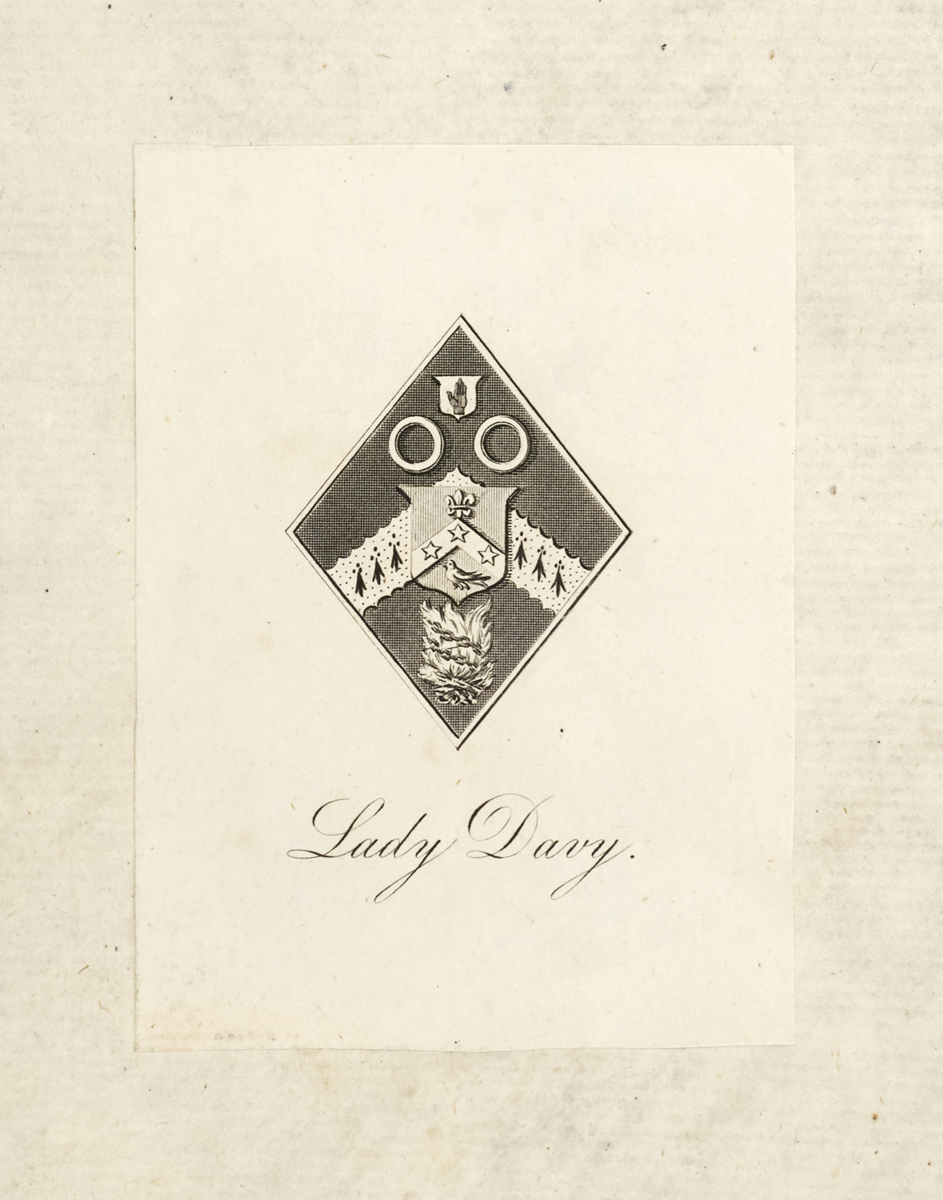
THE LADY DAVY COPY
CARO, Annibale.
Rime del commendatore Annibal Caro. Col privilegio di N.S. PP. Pio V. et dell’illustrissima signoria di Venetia.
Venice, Aldus Manutius the Younger, 1569.
4to, pp. [8], 103, [1 (errata)], [8 (index)]; L2 and N2 signed L3 and N3, respectively; italic letter, woodcut initials, woodcut Aldine device to title-page; some foxing and dampstaining, title-page slightly soiled and repaired; bound in eighteenth-century vellum over boards, gilt lettering-piece to spine; small puncture to upper board, fore-edge of lower board worn, a few marks; several errata corrected in manuscript in a later hand, cancelled early ownership inscription at foot of title-page, armorial bookplate of ‘Lady Davy’.

Added to your basket:
Rime del commendatore Annibal Caro. Col privilegio di N.S. PP. Pio V. et dell’illustrissima signoria di Venetia.
First edition of the poetry of Annibale Caro, offering a scathing yet humorous critique of his greatest poetic rival, Ludovico Castelvetro.
Annibale Caro’s (1507–66) Rime were edited posthumously by his nephew, Giovanni Battista Caro, and published three years after his death by Aldus Manutius the Younger, who would print Caro’s Italian translation of the Due orationi of St Gregory of Nazianzus in the same year.
In 1533, Caro had written a laudatory poem for Cardinal Alessandro Farnese (the dedicatee of the present edition) which elicited a scornful response from poet and literary critic Castelvetro (1505–1556), who was heavily influenced by the Reformation in both politics and poetics. An incensed Caro accused him of heresy, resulting in the confiscation of Castelvetro’s property in 1560 and an ultimate sentence of death in absentia.
Following Caro’s eclogues and love lyrics are a series of ‘sonnetti in burla, detti mattaccini’ mocking Castelvetro, preceded by a note from the printer, who includes them in a desire to ‘always find new material to give you … and to set humorous poems alongside the serious ones’ (p. 90, trans.). In them, Caro satirises his opponent’s symbol of the wise owl (civetta), depicting Castelvetro as a curmudgeonly ‘bird-brain.’
Provenance: with the armorial bookplate of Lady Jane Davy (1780–1855), socialite, cousin of Sir Walter Scott (with whom she corresponded at length), and wife of scientist Sir Humphry Davy; in October 1813, the couple set out on a two-year tour of France, Italy, Switzerland, and southern Germany. Following her husband’s death in 1829, Lady Davy continued to make frequent visits to Italy, where she was a ‘well-known figure in Roman society … and had an accomplished knowledge of classical and modern European literature’ (ODNB).
Adams C746; BM STC Italian, p. 150; Renouard 206, no. 9 (‘Au verso de la page 103 est un errata de treize lignes, qui n’est pas imprimé dans tous les exemplaires’).
